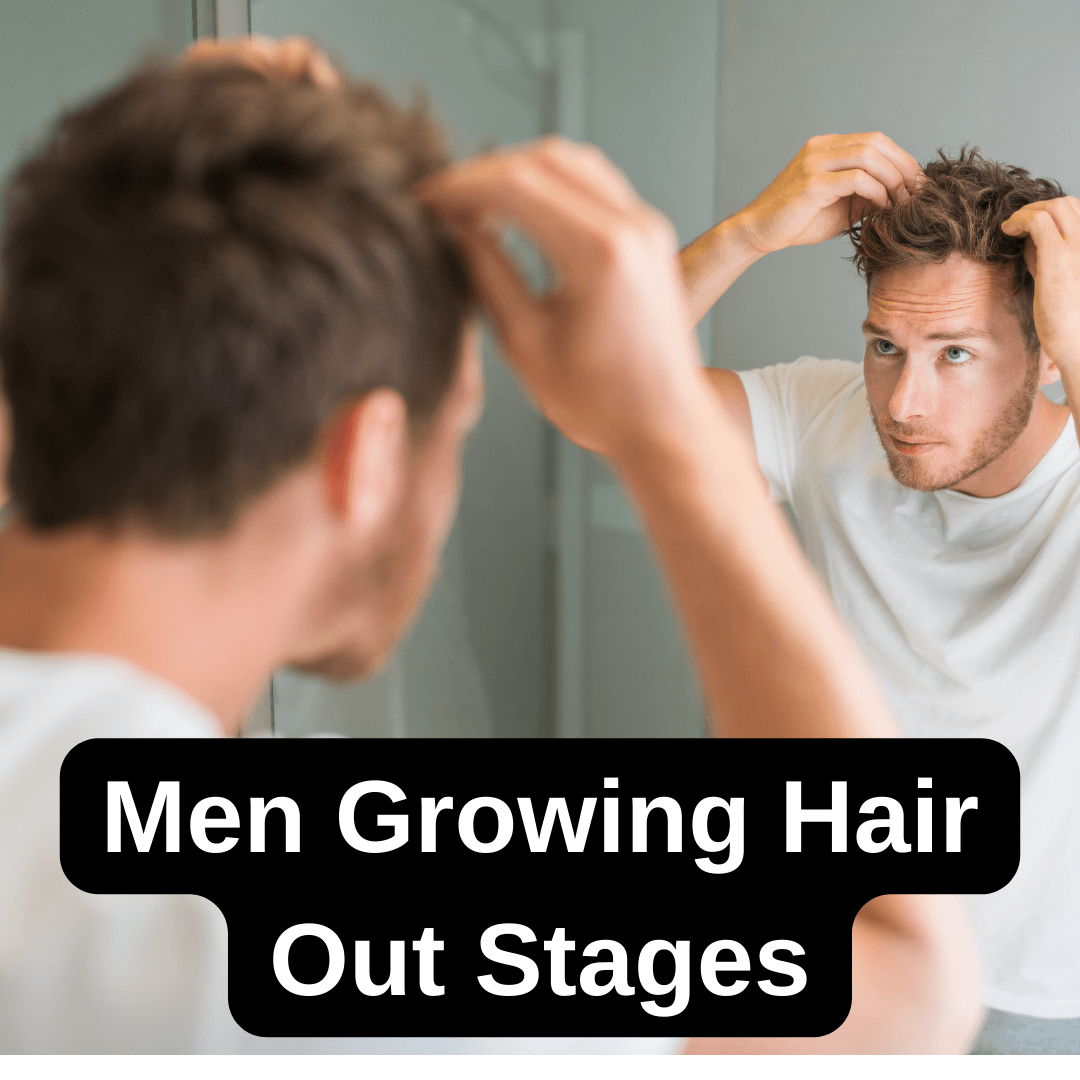Hair growth is a fascinating biological process influenced by various factors, including genetics, hormones, age, and lifestyle. Each strand of hair on the scalp undergoes a distinct growth cycle, progressing through stages that contribute to overall hair health, length, and thickness. In this article, we answer the question—How much does hair grow in a month?—and explore the stages and factors that affect hair growth.
Average Hair Growth Rate Over Time
On average, hair grows about 0.5 inches (1.3 cm) per month, although this rate can vary based on individual health, genetics, and lifestyle factors. Below is a table showing expected hair growth at different time intervals, with specific explanations for each period.
| Hair Growth Period | Average Hair Growth (inches) |
| 1 day | 0.003 (min 0.002 – max 0.004) |
| 1 week | 0.02 (min 0.015 – max 0.03) |
| 1 month | 0.5 (min 0.4 – max 0.6) |
| 3 months | 1.5 (min 1.2 – max 1.8) |
| 4 months | 2.0 (min 1.6 – max 2.4) |
| 5 months | 2.5 (min 2.0 – max 3.0) |
| 6 months | 3.0 (min 2.4 – max 3.6) |
| 1 year | 6.0 (min 5.0 – max 7.0) |
| 2 years | 12.0 (min 10.0 – max 14.0) |
| 3 years | 18.0 (min 15.0 – max 21.0) |
For those considering laser treatments, it’s essential to understand how hair growth patterns affect results. How many sessions for electrolysis? provides a guide on permanent hair removal timelines.
Detailed Explanations for Each Period
- How much does hair grow in 1 day?
Hair grows approximately 0.003 inches (0.08 cm) per day on average, with growth ranging from 0.002 to 0.004 inches (0.05 to 0.1 cm) depending on individual factors. - How much does hair grow in 1 week?
Hair typically grows around 0.02 inches (0.5 cm) in one week, with growth between 0.015 inches (0.4 cm) and 0.03 inches (0.7 cm). - How much does hair grow in 1 month?
On average, hair grows 0.5 inches (1.3 cm) in one month, ranging from 0.4 inches (1.0 cm) to 0.6 inches (1.5 cm) depending on genetics and health. - How much does hair grow in 3 months?
Hair typically grows about 1.5 inches (3.8 cm) over three months, with growth between 1.2 inches (3.0 cm) and 1.8 inches (4.5 cm) based on individual factors. - How much does hair grow in 4 months?
In four months, hair generally grows around 2 inches (5.0 cm), with growth ranging from 1.6 inches (4.0 cm) to 2.4 inches (6.0 cm) based on health and genetics. - How much does hair grow in 5 months?
The average growth over five months is about 2.5 inches (6.4 cm), with growth between 2.0 inches (5.0 cm) and 3.0 inches (7.5 cm). - How much can hair grow in 6 months?
Hair can grow approximately 3 inches (7.8 cm) in six months, with growth ranging from 2.4 inches (6.0 cm) to 3.6 inches (9.0 cm). - How much does hair grow in 1 year?
In one year, hair typically grows about 6 inches (15.3 cm), with growth between 5 inches (12.7 cm) and 7 inches (18.0 cm). - How much can hair grow in 2 years?
In two years, hair can grow approximately 12 inches (30.5 cm), with growth ranging from 10 inches (25.4 cm) to 14 inches (35.6 cm). - How much does hair grow in 3 years?
Over three years, hair can grow around 18 inches (45.7 cm) on average, with growth between 15 inches (38.1 cm) and 21 inches (53.4 cm).
This growth rate chart provides a general guide, but results may vary. Research has shown that genetic factors can extend the anagen phase, allowing for increased hair length potential in some individuals. A study published in The Journal of Investigative Dermatology indicated that variations in the FGF5 gene can prolong the anagen phase, leading to longer hair growth in some cases.
Key Stages of Hair Growth
The hair growth cycle consists of four main stages: Anagen phase of hair growth (growth), Catagen phase of hair growth (transition), Telogen phase of hair growth (rest), and Exogen (shedding). Each stage is crucial, contributing to hair length, thickness, and renewal. These stages determine monthly growth rates, with the anagen phase playing the most significant role, as hair follicles are actively growing during this time.
Anagen Phase of Hair Growth (Growth Phase)
The anagen phase of hair growth is the most active period for hair follicles, where new cells rapidly divide to produce a strand of hair. Lasting between 2 and 7 years for scalp hair, this phase largely determines how long your hair can grow. During this time, hair follicles remain deeply rooted in the scalp, continually producing cells that add to the hair’s length. The duration of the anagen phase varies by individual, influenced by genetics and biological factors; those with longer anagen phases are naturally capable of growing longer hair.
Catagen Phase of Hair Growth (Transition Phase)
Following anagen, the hair enters the catagen phase of hair growth, a short transitional period lasting about 2-3 weeks. During this time, hair growth slows, and the follicle begins to shrink. The follicle, which was once deep in the scalp, detaches slightly from its blood supply, halting new cell production. This phase prepares the hair strand for the next stage, where it will eventually be pushed out and replaced by new growth.
Those exploring non-permanent options for hair removal may also be interested in Is it bad to wax your face?, which discusses potential effects of facial waxing on skin and hair.
Those interested in hair removal alternatives might consider What is laser waxing? as a modern hair removal method.
Telogen Phase of Hair Growth (Resting Phase)
The telogen phase of hair growth is a resting period for hair follicles that lasts approximately 3 to 4 months. During telogen, the follicle is completely dormant, and no further growth occurs. However, the hair remains in place, sustained by the follicle’s structure but without additional cellular activity. This phase is also a time for recovery, as the follicle replenishes nutrients and prepares for a new growth cycle.
Exogen (Shedding Phase)
Exogen, sometimes considered an extension of the telogen phase, is when the hair naturally sheds from the scalp. Each hair shed during exogen makes way for a new hair in the anagen phase, beginning the cycle anew. This shedding process is a natural part of hair renewal, with most people shedding between 50-100 hairs daily. It’s a healthy process that clears old hair and encourages new growth.
Men Growing Hair Out Stages

For men, growing hair out can be an exciting journey that follows a unique set of stages. Each phase requires patience, and understanding the progression can help set realistic expectations. Men’s hair growth stages are generally the same as women’s, but the experience can differ due to styling choices, growth rates, and maintenance routines. Here’s a look at what men typically encounter as they grow their hair out:
| Stage | Time Frame | Hair Length (inches) | Description |
| Buzz Cut / Initial Growth | 0-3 months | 0-1 inch | Minimal styling, hair just starting to cover scalp evenly. |
| Awkward Length | 3-6 months | 1-3 inches | Fuller look, harder to style, requires maintenance. |
| Medium Length | 6-12 months | 3-6 inches | Style flexibility, can slick back or part, may reach ears. |
| Long Hair | 12-18 months | 6-9 inches | Can tie back in a bun or ponytail, needs regular conditioning. |
| Fully Grown Out | 18+ months | 9+ inches | Shoulder-length or longer, full styling options, high maintenance. |
Growing out hair takes patience and requires attention to care, especially during the longer stages. Using suitable hair products and maintaining a balanced routine can help ensure the hair remains healthy and manageable at each phase.
If you’re struggling with eyebrow shape during awkward hair phases, this guide provides simple and effective grooming solutions: https://www.epilationworld.com/how-to-get-rid-of-unibrow/
Hair Regrowth Stages of Hair Growth After Chemo
Chemotherapy often causes significant hair loss due to its impact on rapidly dividing cells, including hair follicles. After completing chemotherapy, the stages of hair growth after chemo are similar to the natural hair growth cycle. However, hair may regrow differently in terms of texture and thickness, and it typically follows a predictable pattern over several months.
The regrowth stages can vary based on individual factors, including the type of chemotherapy, overall health, and genetics, but the process generally follows these stages:
- Initial Rest Period (Telogen Phase)
After chemotherapy ends, hair follicles remain in the telogen (resting) phase for a few weeks or months. During this period, follicles recover from the treatment, preparing to re-enter the growth cycle. - Early Growth (Anagen Phase)
Hair usually begins to grow back within 1-3 months after completing chemotherapy. This initial growth often appears as thin, soft, or even fuzzy hair and can be a different color or texture than the original hair. - Active Growth (Extended Anagen Phase)
At around 3-6 months post-treatment, hair enters an extended anagen phase where growth becomes more noticeable, and hair starts to thicken and return to its usual texture. Hair can grow at approximately 0.5 inches (1.3 cm) per month, although the rate may vary. - Full Coverage and Maturation
By 6-12 months after chemotherapy, most individuals experience fuller coverage on the scalp. Hair texture and thickness continue to mature, often reverting to its original color and feel, although some patients may notice permanent changes.
To support post-chemo hair recovery, many also turn to natural remedies. Rose water benefits explores gentle solutions that may soothe the scalp and promote healthier regrowth.
The table below provides a timeline of these stages and the average hair growth length after chemotherapy.
| Stage | Time After Chemo Ends | Expected Hair Growth Length |
| Initial Rest Period | 0-3 weeks | No growth, follicles are in recovery |
| Early Growth | 1-3 months | Thin, soft, or fuzzy hair, up to 0.5 inches (1.3 cm) |
| Active Growth | 3-6 months | Noticeable growth, up to 2-3 inches (5-7.6 cm) |
| Full Coverage and Maturation | 6-12 months | Fuller hair coverage, up to 5-6 inches (12.7-15.3 cm) |
Alopecia Regrowth Stages
Alopecia is an autoimmune condition that leads to hair loss, often in round patches, though it can also result in complete hair loss on the scalp (alopecia totalis) or even the entire body (alopecia universalis). Hair regrowth after alopecia varies widely depending on the type and severity of the condition, as well as individual factors such as treatment response and immune system health. The stages of hair growth after alopecia follow a pattern similar to the natural hair cycle, although it may be slower or irregular.
| Stage | Time Frame | Characteristics of Hair Growth |
| Dormant Period | Varies (weeks to months) | No new hair growth; follicles remain in the telogen phase due to immune system activity. |
| Initial Regrowth (Early Anagen Phase) | 1-3 months | Fine, soft, vellus hair starts to appear; often lighter and thinner than original hair. |
| Strengthening and Pigmentation (Mature Anagen Phase) | 3-6 months | Hair begins to thicken, regain color, and strengthen, transitioning from vellus to terminal hair. |
| Full Coverage and Maintenance | 6+ months | Fuller hair coverage develops as hair continues to grow and fill in. Some individuals achieve near-complete recovery with consistent care. |
If you’re noticing changes in brow density due to alopecia, you may find insights in our article Why are my eyebrows falling out?.
What Affects Hair Growth? Understanding the Key Influencers
Hair growth is a multifaceted biological process that has garnered significant attention from the scientific community. Gaining insight into the underlying mechanisms of hair growth can empower individuals to address a range of hair-related challenges and enhance their hair care practices. Here are some pivotal scientific discoveries that elucidate the hair growth cycle:
Anagen Phase and Genetic Factors
The anagen phase, characterized as the active growth stage of hair follicles, can vary considerably among individuals, largely due to genetic influences. Research published in The Journal of Investigative Dermatology highlights that variations in the FGF5 gene are associated with the length of the anagen phase. Those with particular genetic variations may experience extended anagen phases, allowing for longer hair growth. This finding underscores the significant role genetics plays in determining hair length potential.
Role of Hormones
Hormones are vital regulators of hair growth. Specifically, androgens such as testosterone and dihydrotestosterone (DHT) profoundly affect the hair growth cycle. Scientific studies have illustrated that elevated levels of DHT can cause hair follicle miniaturization, a key factor in conditions like androgenetic alopecia (commonly known as male or female pattern baldness). This research has led to the development of treatments such as finasteride, which blocks the conversion of testosterone to DHT, offering a therapeutic approach to combat hair loss. Those curious about hair restoration might explore options such as Turkey hair transplant airport services, which provide advanced hair regrowth solutions.
Impact of Nutrition
Numerous studies have established a direct correlation between nutrition and hair health. For instance, a comprehensive study featured in Nutrients examined the effects of micronutrients like biotin, zinc, and vitamins A and E on hair growth. The results indicated that deficiencies in these vital nutrients could lead to hair thinning and loss, while supplementation could significantly enhance hair health and promote growth rates. This highlights the importance of a balanced diet rich in essential vitamins and minerals for maintaining robust hair.
The Effect of Stress
Research has increasingly focused on the connection between stress and hair loss. A pivotal study published in Nature demonstrated that stress can trigger the release of hormones such as cortisol, which may prematurely push hair follicles into the telogen phase. This condition, known as telogen effluvium, is marked by increased hair shedding. Recognizing this relationship is crucial for understanding the importance of stress management techniques—such as mindfulness practices and exercise—in preserving hair health.
Scalp Health and Hair Follicle Function
The significance of scalp health in fostering hair growth has been a recent area of focus in scientific research. A study published in Dermatology emphasized that inflammation of the scalp can impede the function of hair follicles. Treatments that target inflammation, including topical minoxidil, have shown promise in improving scalp health and stimulating hair regrowth. This highlights the need for individuals to maintain a healthy scalp environment for optimal hair growth. Increased scalp oiliness can also impact hair health—Why is my nose so oily? explains how excess oil production relates to skin and scalp condition. Additionally, scalp health plays a critical role in follicle function.
Seasonal Hair Growth Patterns
Research indicates that hair growth can be influenced by seasonal changes. A study published in The Journal of Clinical Endocrinology & Metabolism found that hair growth rates may surge during the spring and summer months, potentially due to increased sunlight exposure and elevated vitamin D levels, both of which can enhance hair follicle activity. This seasonal variation is important for individuals to consider when planning their hair care routines throughout the year.
By comprehending these scientific principles and research findings, individuals can make informed decisions regarding their hair care practices and effectively address common issues associated with hair growth. Understanding the interplay of genetics, hormones, nutrition, stress, scalp health, and seasonal influences provides a comprehensive foundation for optimizing hair health.
Using the keywords “Things That Affect Hair Growth” and “What Affects Hair Growth,” individuals can better navigate their understanding of this intricate process and implement effective strategies for maintaining healthy hair.
Frequently Asked Questions about Hair Growth
- What is the maximum hair growth in a year?
Most people experience 6 inches of growth in a year, but some may achieve up to 8-10 inches under optimal conditions. - Can hair grow more than 6 inches a year?
Yes, some individuals can grow slightly more than 6 inches per year, especially if they have a naturally long anagen (growth) phase. However, 6 inches is the average for most people. - Can you grow 12 inches of hair in one year?
Growing 12 inches of hair in one year is exceptional and uncommon. It requires an average monthly growth rate of 1 inch, which is twice the standard growth rate. - How long will hair grow in a lifetime?
On average, hair grows about 1,000 inches over a lifetime, depending on individual factors and health conditions. - Can hair grow in 2 years?
Yes, in two years, you can expect about 12 inches of growth on average, though this can vary between 10 to 20 inches based on individual factors. - How to tell if hair is growing?
You can determine if hair is growing by measuring it at regular intervals, checking for new growth near the scalp, and observing fewer split ends with proper care. - How can I tell if my hair is growing at a healthy rate?
Signs of healthy hair growth include consistent length increase, minimal breakage, and overall hair vitality, such as shine and strength. Signs include minimal breakage, consistent length increase, and overall hair vitality. Proper care is crucial, especially when using beauty treatments like How many coats of nail polish should you apply? to maintain healthy nails and hair. - What are the signs of healthy hair growth?
Healthy hair growth is indicated by hair that is shiny, thick, and strong with minimal breakage or split ends. - What are the signs of unhealthy hair growth?
Unhealthy hair growth is indicated by excessive shedding, thinning hair, breakage, and lack of shine or moisture. - Can hair grow 3 cm in a month?
Growing 3 cm (1.2 inches) in a month is rare, as most people experience around 1.2-1.5 cm (0.5 inches) per month. Rapid growth like this may occur due to genetics, optimal health, and ideal environmental conditions. - Does hair growth slow down during winter?
Some individuals may notice slower hair growth in winter due to reduced humidity and dry air, which can affect overall hair health. - Does hair grow slower as you age?
Yes, as you age, hair growth slows due to a shorter anagen phase and other biological changes. - Does hair growing have a limit?
Yes, each person’s hair has a maximum growth limit, influenced by the length of their anagen phase. - Is hair length genetic?
Yes, hair length potential is largely genetic, as genetics determine the duration of the anagen phase, which influences the maximum possible length. - Does hair grow after 25?
Yes, hair continues to grow after 25, though growth may slow down slightly due to changes in the anagen phase duration and overall health. - How rare is it to have long hair?
While many people can grow long hair, achieving exceptionally long hair (beyond waist length) is rarer due to genetic limitations in the growth cycle. - Does hair grow differently in men and women?
While the biological processes are the same, hormonal differences can influence hair growth rates and patterns between men and women. - Does hair growth vary by ethnicity?
Yes, hair growth rates can vary by ethnicity, influenced by genetic factors that affect hair structure and growth cycles. - Can hair growth be enhanced by certain hairstyles?
Yes, certain hairstyles that minimize tension and breakage can promote healthier hair growth. - Can pregnancy affect hair growth rates?
Yes, during pregnancy, hormonal changes can lead to faster hair growth for some women, but this varies by individual. - Can hair growth be impacted by environmental factors?
Yes, environmental factors such as pollution, humidity, and climate can affect hair health and growth rates. - Is there a way to measure hair growth accurately?
Yes, hair growth can be measured accurately by taking regular measurements at the same location on the scalp and tracking changes over time. - How to slow hair growth?
Slowing hair growth is generally not advised, as it’s a natural process, but minimizing scalp stimulation and avoiding products that promote growth may slightly reduce growth. - Can you feel hair growing?
Hair growth itself is not typically felt, as it occurs gradually and without noticeable sensation. - How often should I wash my hair for optimal growth?
Washing frequency can vary based on hair type and personal preference, but maintaining a clean scalp is essential for healthy hair growth. - What are the common myths about hair growth?
Common myths include the belief that shaving hair makes it grow back thicker or that certain foods can drastically change growth rates overnight. - What role do hormones play in hair growth?
Hormones significantly influence hair growth, particularly androgens, which can affect the anagen phase and hair density. - What are the best practices for hair care to promote growth?
Using gentle hair care products, maintaining a balanced diet, staying hydrated, and protecting hair from heat and environmental damage are key practices. - Are there specific products that can help increase hair growth?
Products containing minoxidil, biotin, and other nourishing ingredients may help support hair growth for some individuals. - What is the average hair growth rate by age?
The average hair growth rate may vary throughout life, with younger individuals often experiencing faster growth compared to older adults. - Can laser tattoo removal affect hair growth?While laser tattoo removal does not directly impact hair follicles, knowing the proper treatment process is essential. Check out Laser tattoo removal in Chilliwack for a detailed breakdown.
Bonus– 1 Little-Known Fact: Hair Growth and Space Travel
Here’s something you might not have known: Hair grows differently in space! Due to the lack of gravity, astronauts’ hair tends to grow faster on the International Space Station (ISS) than on Earth. Although the exact reasons are still being studied, the microgravity environment appears to impact blood flow and cell regeneration, potentially accelerating hair growth rates for astronauts. This phenomenon reveals just how adaptable human biology is, even under extreme conditions. It’s a fascinating glimpse into how hair growth can vary not only by individual factors but also by environment—whether on Earth or beyond!
Bonus– 2 Fun Fact: The World’s Longest Hair
Did you know? The world record for the longest hair is held by Xie Qiuping from China. Her hair measured an astonishing 18 feet and 5.54 inches (5.62 meters) when it was recorded in 2004! Xie started growing her hair at the age of 13, and it took over 30 years to reach this remarkable length. Her dedication and patience demonstrate the incredible potential of hair growth when one’s anagen phase is exceptionally prolonged and carefully maintained. This record highlights how unique and varied individual hair growth cycles can be!
Conclusion
Understanding hair growth and the various factors that influence it can empower individuals to make informed decisions about their hair care routines. From the average growth rates to the unique stages of hair growth, these insights highlight the complexity and variability of hair health. Whether you’re dealing with alopecia, post-chemo regrowth, or simply looking for ways to maximize your hair growth potential, knowledge is key. And if you’re facing an unexpected beauty mishap, check out Lash lift gone wrong? Here’s how to fix it for expert advice.
If you’re managing unwanted facial or body hair while supporting natural growth, Can waxing cause ingrown hairs? offers guidance on how to wax without irritation.
Curious about natural wax alternatives? Sugar wax without lemon shares a beginner-friendly DIY method.
And if you’re comparing removal options, our Brazilian laser hair removal guide provides a detailed overview of one of the most sought-after treatments

Meet the Epilation World Expert Team
Our team consists of certified professionals with over 17 years of experience in laser hair removal, skincare, and personal care. With advanced training in diode laser, IPL, waxing, and skin health, we combine clinical precision with real-world expertise to deliver reliable, evidence-based guidance.
Every article is carefully created and reviewed by our experts to ensure safety, clarity, and scientific accuracy. Our work has helped thousands choose safe, effective hair removal solutions tailored to their unique needs.
Trusted expertise. Real results. That’s our promise.





